By Dan Weisz
We are used to seeing and hearing Great Horned Owls and Western Screech Owls in the Foothills. If you are lucky, you might have an Elf Owl too, but they are fairly scarce compared to the others. But there are other owls who call Arizona their home.
Early in October I had the chance to see a locally rare bird that was migrating though Arizona. I traveled to Maricopa County to an undisclosed location in search of Long-eared Owls and was rewarded by my efforts. At first as we walked through this deep desert wash, we saw nothing. The Palo Verde trees were very thick. Then, as we walked we began to see fleeting glances of large birds flying off in the distance just above the floor of the wash. Finally at one point, looking through one tree we saw two Long-eared Owls in the next Palo Verde. By the time I found a window in the foliage to shoot the owls, one had flown off. The remaining owl gave us a look and then flew off after the other.
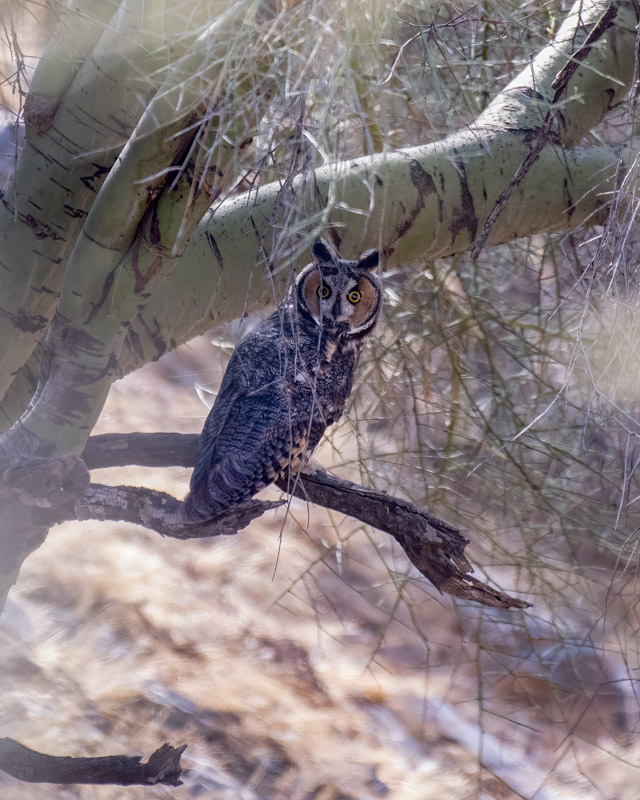
Further up the wash after seeing many owls flying well ahead of us and always remaining just out of sight, we came around a bend to find two Long-eared Owls perched alertly on the next tree. The haze on the bottom of the photo is from the leaves I was shooting through. The owl on the left was more relaxed and not ’stretched’ tall in a camouflage position.
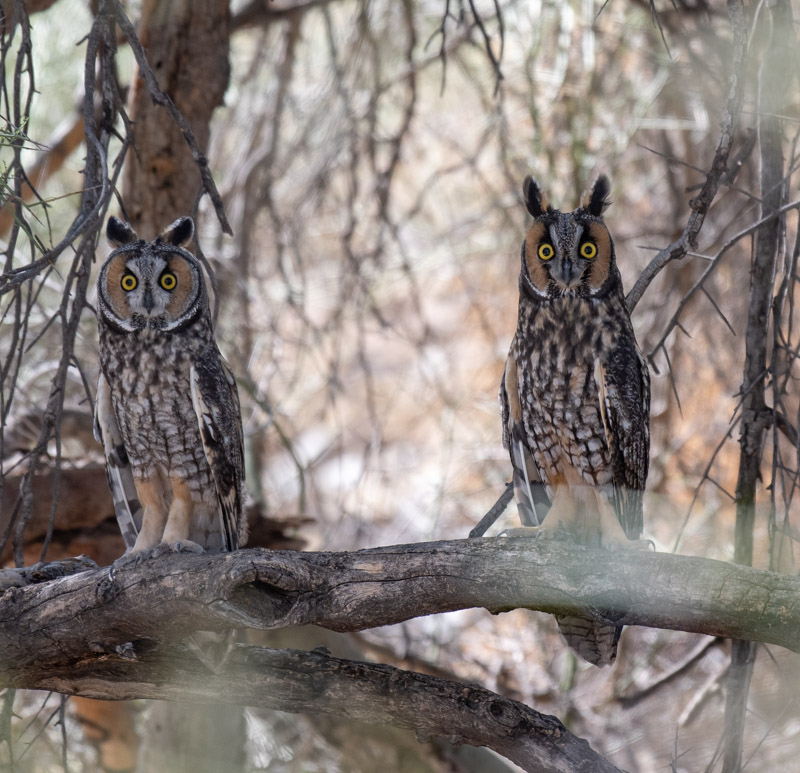
Seconds later I had moved slightly to the left to avoid the leaves between me and the owls and the first owl had flown off. Thankfully, the second owl remained, preferring to “be invisible” rather than to flee. Long-eared Owls look a bit like Great Horned Owls only lankier and with a perpetual expression where they seem to look very surprised!
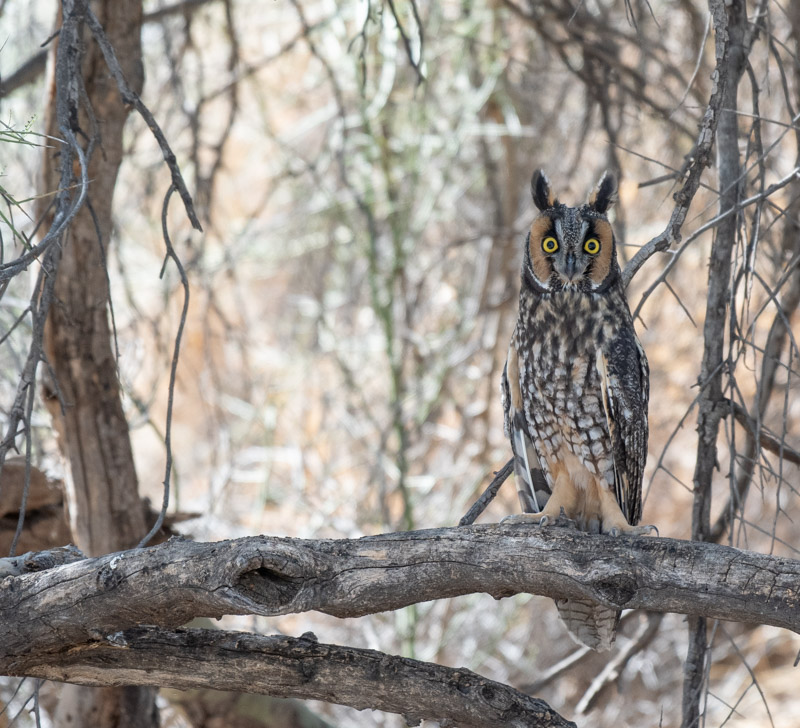
Long-eared owls have very long ear tufts. And “ear tufts” does not imply that those feather tufts have anything to do with the owl’s ears or its hearing. Mammals have ears that stick out of their heads, so when we see an owl with those feather tufts, they look like ears to us. These birds’ ears are actually openings hidden under the feathers behind their eyes and inside of the orange facial disc.
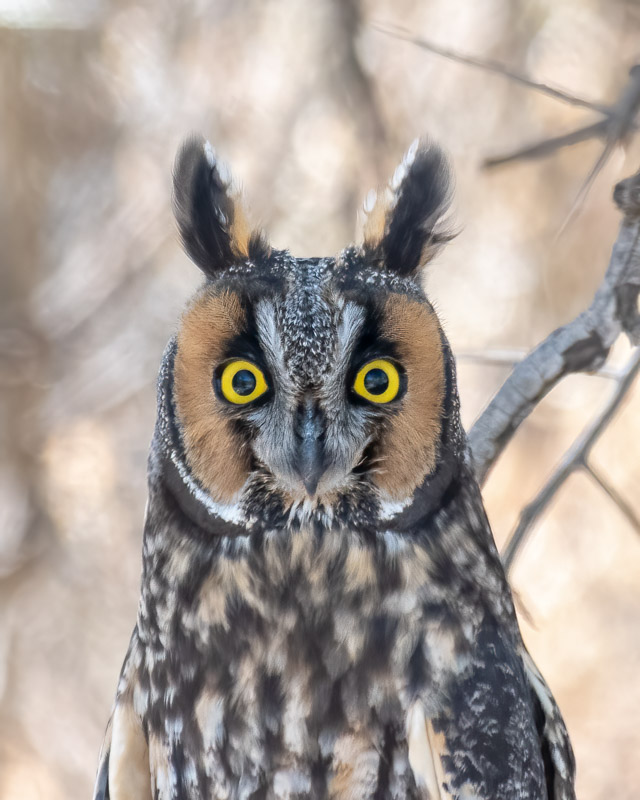
Long-eared owls like to spend their days roosting in dense parts of trees. Here is my friend shooting a photo of this same owl on the same perch. You can “see” how well hidden the owl is. Even though I know exactly where it is, I still struggle to see the bird in the tree.
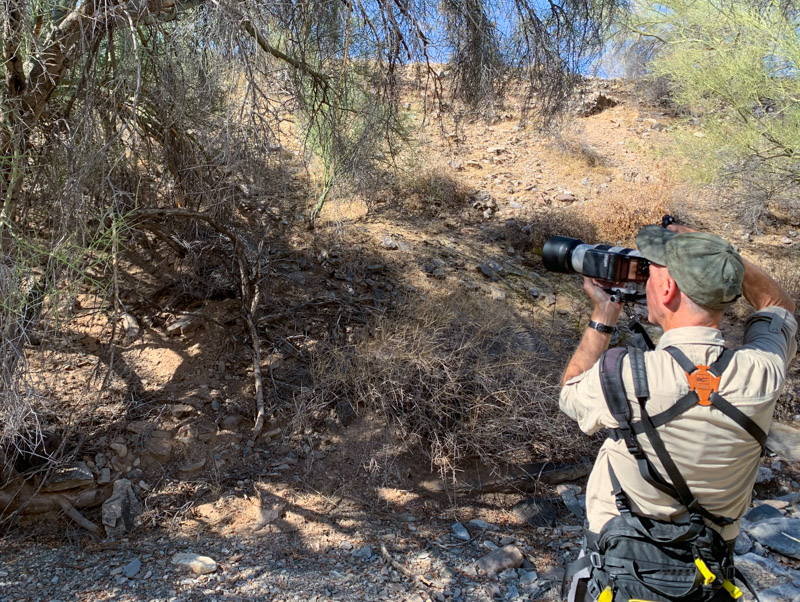
After seeing how easily the owl blends in to its background, the pattern of its feathers as a disguise makes sense. And the feather tufts on its head, called plumicorns, serve to break up its silhouette so that the bird is even more hidden in the shadows. The word plumicorn comes from the Latin words pluma (small soft feather) and cornu (meaning horn).
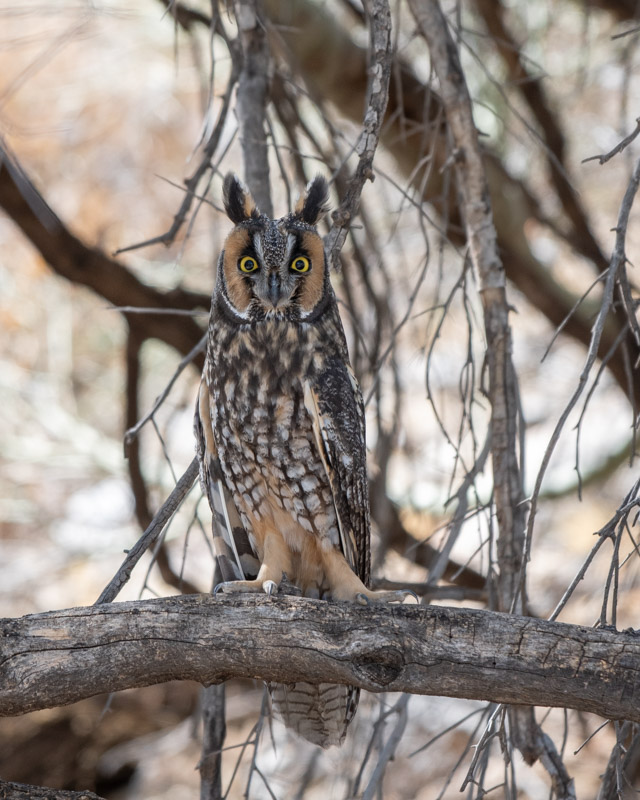
Long-eared Owls have those white eyebrows between their eyes. I took one more photo of the owl and then we left it there, walking up the wash in hopes of finally finding the others.
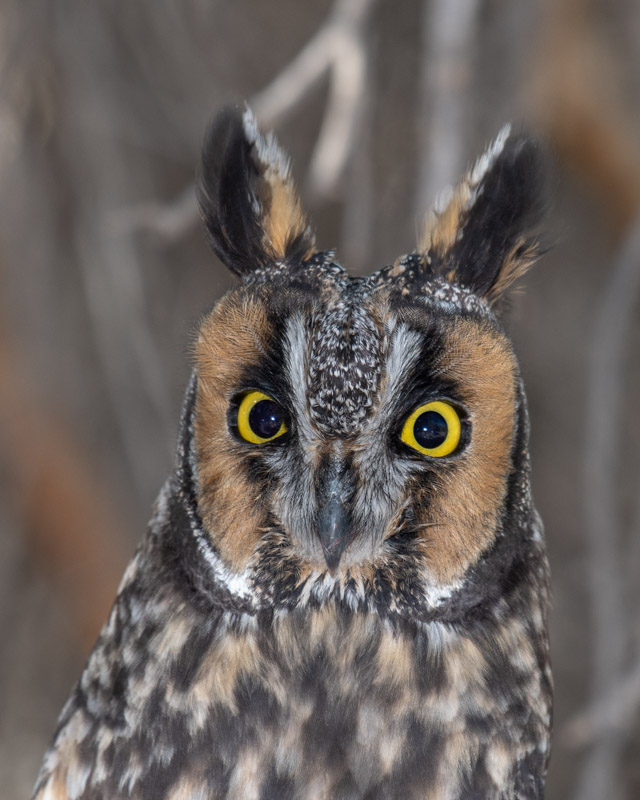
We walked up the wash to where the trees ended and the owls’ roosting habitat of dense palo verde trees disappeared. The other owls were not to be seen. They had likely circled back around to the thicker trees well below us. We had been out for several hours and thought we’d call it a day. We walked back down the wash for a short while to get back to the trail. Just before the trail, we saw an old friend right where we had left it.
We found the same Long-eared Owl as before, perched in the exact same spot where we had left it 15 minutes prior. It was in the same “cryptic” posture, trying to look inconspicuous and hidden. I’m still amazed at how absolutely straight its back was.
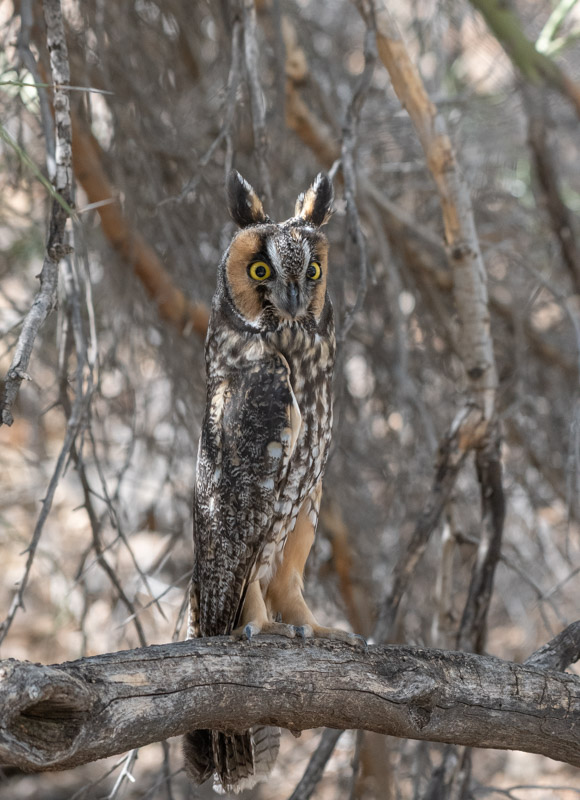
We walked on, turning around for one last look, and then left.
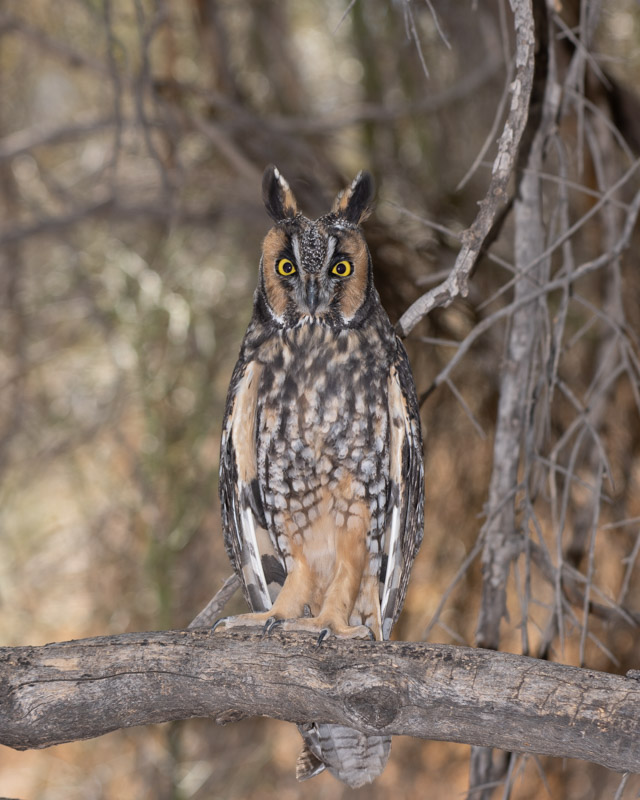
Although solitary in the summer, Long-eared Owls roost in large groups in the winter. By now, the group we saw has migrated to their winter home. I feel very fortunate to have come across this group and now have vivid memories of this bird that will last me a lifetime although I do hope to find them again during next fall’s migration.
